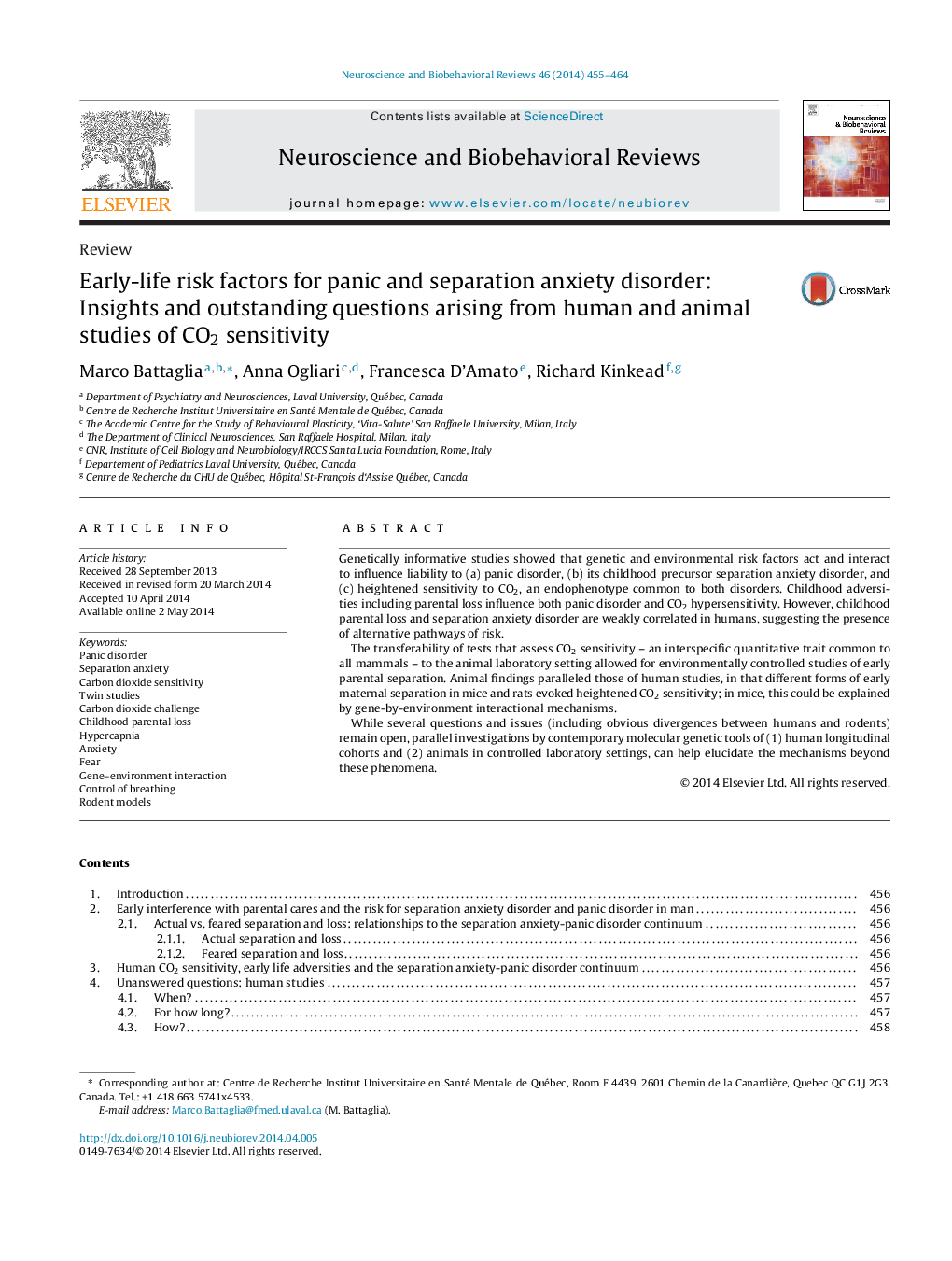| Article ID | Journal | Published Year | Pages | File Type |
|---|---|---|---|---|
| 937620 | Neuroscience & Biobehavioral Reviews | 2014 | 10 Pages |
•Panic, separation anxiety disorder, CO2 hypersensitivity share a common liability.•Early adversities and parental loss influence human panic and CO2 hypersensitivity.•We exported CO2 sensitivity to the animal lab to study interference with parenting.•Gene–environment interactions explain CO2 hypersensitivity after early adversities.•Parallel investigations of humans and rodents will further clarify these phenomena.
Genetically informative studies showed that genetic and environmental risk factors act and interact to influence liability to (a) panic disorder, (b) its childhood precursor separation anxiety disorder, and (c) heightened sensitivity to CO2, an endophenotype common to both disorders. Childhood adversities including parental loss influence both panic disorder and CO2 hypersensitivity. However, childhood parental loss and separation anxiety disorder are weakly correlated in humans, suggesting the presence of alternative pathways of risk.The transferability of tests that assess CO2 sensitivity – an interspecific quantitative trait common to all mammals – to the animal laboratory setting allowed for environmentally controlled studies of early parental separation. Animal findings paralleled those of human studies, in that different forms of early maternal separation in mice and rats evoked heightened CO2 sensitivity; in mice, this could be explained by gene-by-environment interactional mechanisms.While several questions and issues (including obvious divergences between humans and rodents) remain open, parallel investigations by contemporary molecular genetic tools of (1) human longitudinal cohorts and (2) animals in controlled laboratory settings, can help elucidate the mechanisms beyond these phenomena.
